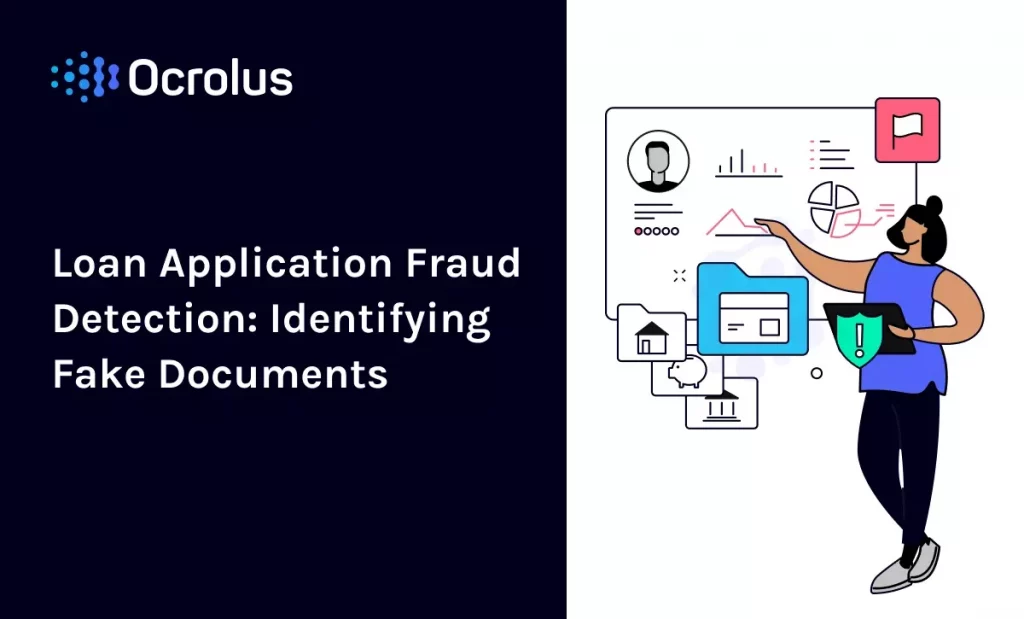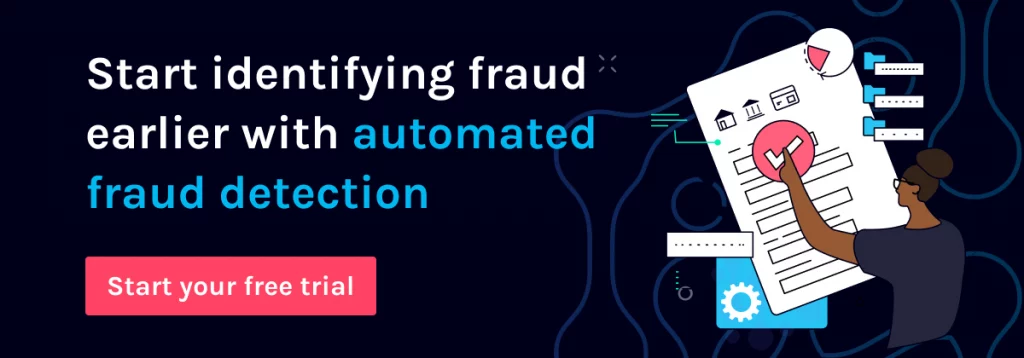This website uses cookies so that we can provide you with the best user experience possible. Cookie information is stored in your browser and performs functions such as recognising you when you return to our website and helping our team to understand which sections of the website you find most interesting and useful.
Loan Application Fraud Detection: Identifying Fake Documents

Many online lenders ask borrowers to upload bank statements, pay stubs, tax forms, and other financial documents to assess creditworthiness.
While the broad majority of borrowers who submit financials are legitimate applicants, some do submit documents that are altered or fabricated to enhance their ability to secure a loan.
Document fraud, like most forms of online lending fraud, is becoming easier to execute. As digital imaging software and specialized counterfeiting services continue to evolve, fraudulent documents are becoming harder to detect and starting to cost lenders millions.
Read on to learn what document fraud is in online lending, and how lenders can detect loan application fraud with innovative technology.
Document Fraud: Anyone Can With the Right Software or Service
Document fraud can run the gamut from the alteration of individual transactions to creating entire counterfeit paper trails. Alterations are made primarily with PhotoShop and other design software.
The best fraudsters are experts with these applications, but many bad actors do not need design skills to engage in loan application fraud. Fraudsters can easily outsource their counterfeiting to third parties.
For instance, there are online services that specialize in “Novelty Bank Statements.” The documents these services produce are actually just doctored bank statements that need to be verified for fraud. A quick Google search will yield many of these semi-illicit services. Most of these services also generate fake pay stubs, utility bills, and other documents that help bad actors secure loans illegitimately.
Identifying Different Degrees of Document Fraud (with Examples)
The best way to identify loan application fraud is to break things down by the skillset of the fraudsters. On one side of the spectrum, you have fraudsters and the errors within their fake documents. By examining the level with which a fraudulent loan document was created, you can determine the best way to prevent future fraud.
Fraudster #1: The Novice
On one side of the spectrum, you have fraudsters who are relatively unskilled. They, or the services that they use, make image alterations that are obvious to the naked eye and take little effort to detect. These alterations are usually botched PhotoShop jobs, made for a transaction or two, in order to inflate the fraudster’s income.
Humans and machines alike can identify this form of fraud, although when dealing with thousands of pages, automating the task greatly improves time efficiency.
Here are some examples of this level of document tampering:

Fraudster #2: The Expert
The next level of document fraud is more sophisticated. These fraudsters don’t make alterations that are obvious to the naked eye. All the transactions, forms, and financial documents look realistic and accurate. Detecting these alterations usually requires a platform with anti-fraud technology to prevent the application from making it through to approval.
A platform with anti-fraud technology can pick up on subtle clues that the human eye cannot detect, such as inconsistent fonts, formatting quirks, and reconciliation errors between the transactions and stated account balances.
In these examples, a formatting quirk draws attention to potential fraud in the activity summary of a bank statement. Here is the suspicious version and the original version of the activity summary:

In this side by side, the first image on the left (Harry’s) shows that key fields were tampered with on the bank statement and new text was added, such as the account number, account name and address. The image on the right (Jill) is the original statement that Detect is able to recover and reconstruct due to its machine learning.
This level of tampering cannot be detected with the human eye due to the granularity of the fraud. But a platform that automates anti-fraud detection can identify these miscues quickly and better prevent fraud.
Fraudster #3: The Master
The final level of image tampering is near-flawless document fabrication. These documents do not generate reconciliation errors, seem real to both human and machine observers, and pass a number of authenticity checks.
Sometimes these nearly flawless fraudulent documents can be detected by examining the metadata of the file. In other cases, the set of transactions taken as a whole are suspicious, even if individual transactions appear to be valid. In both cases, a fraud detection platform is the ideal prevention method.

The Solutions that Fight Back Against Document Fraud
Lenders can fight back against document fraud with the right automated document tampering technology. Ocrolus uses artificial intelligence, multiple layers of machine-augmented human review, and industry knowledge acquired through collaboration with 50+ top lenders to stop fraud – including loan application fraud – in its tracks.
Ocrolus combines automated fraud analysis with trained human-in-the-loop review. The platform pairs the speed, efficiency, and capabilities of automation with the expertise and judgment of experienced human reviewers, leading to more profitable deals and less fraud false positives.
To gain additional leverage, lenders can also harness digital data sources to augment and streamline anti-fraud underwriting processes.
Data aggregators like Plaid allow lenders to pull up to 24 months of transaction history once a borrower has submitted bank login credentials. Lenders can use data aggregation before funding to ensure that the applicant’s financial documents align with data pulled directly from the bank.
Lenders that combine accurate and intelligent document processing and digital verification experience the best of all worlds. This combination widens the acquisition funnel by optimizing for customer experience and non-intrusiveness, while adding multiple layers of fraud detection into the underwriting process.
Document Fraud Is A Real, But Manageable, Threat
Document fraud is a real threat, but technology solutions enable lenders to make the problem manageable. As newer and more sophisticated forms of document fraud emerge, lenders must stay abreast of the latest technology to stay one step ahead.
Of course, document fraud is just one of many other types of online lending fraud, including identity fraud. Any comprehensive fraud strategy must deal with all these different forms of online lending fraud, both individually and as networks of malign activity. See how you can prevent costly losses with automated document fraud detection from Ocrolus.






